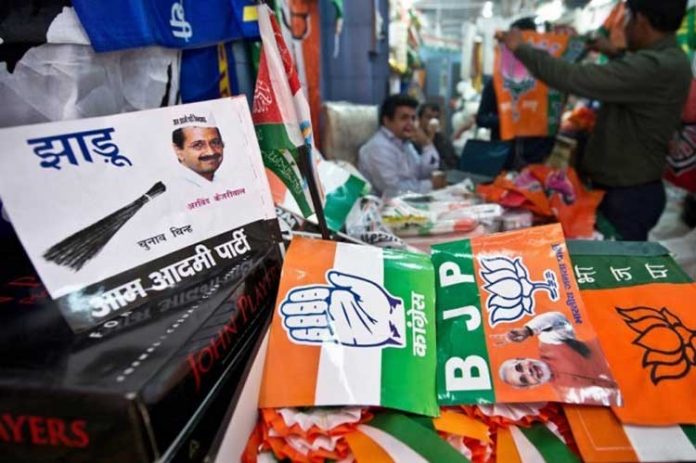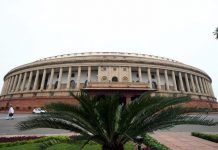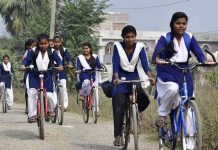This article is written by Sushmita Choudhary from New Law College, Bharati Vidyapeeth Deemed University. This article talks about how caste has been present in the political sphere of India all the time.
Table of Contents
Introduction
“Jaati na poocho sadhu ki, pooch leejiye gyan”, said India’s saint-poet Kabir Das (Do not judge a priest by his caste, imbibe his knowledge). However, the most-asked question in an Indian election remains is about the contesting candidate’s caste. Political analysts ask it, TV anchors ask it, poll strategists ask it and the voters ask it as well. The caste-related issues are debated seriously in TV shows and newspaper articles during an election season. Such a weird identity politics is not present in any other democracy! The politicians did not introduce the Hindu caste system but they exploit it by increasing the caste animosities to assemble their vote banks. There are four main castes- Brahmin(priests and teachers), Kshatriya(warriors and rulers), Vaishya(traders), and Shudra(servants including untouchables). They form a hierarchical order which also includes hundreds of sub-castes within a caste. Every caste is credited with certain specific attributes such as valour or craftiness. State politics in India has been significantly a hotbed of political castes.
Building Caste Profile
All parties in India draw up a poll strategy on the basis of the constituency’s caste profile. Messages in the election are tailored in a way to suit the dominant caste present there and ideological coherence can be sacrificed. If a candidate belongs to caste A and his rival to caste B, the rival candidate will field dummy candidates of caste A to divide the opponent’s votes.
Provocative rumours enhance inter-caste and intra-caste animosities. False statements fuel up sub-caste jealousy. Political rivalry is promoted among the caste groups. Usually, in the village areas, the dominant caste tries to impose its political preference on the depressed section by issuing threats. If the election results show that the dominant caste leader’s fiat, the resistant voters are subjected to violence. Extensive opinion polls make it easy to take revenge. The local newspapers list the caste-wise categorization of the candidates fielded and the candidates who win the election. Caste matters in the selection of the candidates and forms the content of the poll campaign speeches. When the government is formed, the media highlights the caste composition of cabinet members.
Caste influences the policy-making of the government. The programmes, policies, and declarations of political parties are made while keeping in view the caste factor. The voting in elections and mobilization of political support moves on the caste lines. The caste factor also shapes the formation of the council of ministers and making appointments to the various political positions in the government. Politicians bargain votes on the caste lines. The administration in India has certainly not escaped the influence of caste in India. The postings, transfers and appointments of public officials are somewhere influenced by caste considerations. The political leadership in many political parties emerges and survives on the basis of support of particular caste groups.
Caste Loyalty
Different caste groups have their loyalties behind completely different political parties and their ideologies. Right from the birth, people inherit a caste and grow up as a member of a specific caste cluster. They belong to either one of the high castes or other backward castes or scheduled castes and scheduled tribes. Caste values and caste interest eventually start influencing socialisation and consequently his political thinking, awareness, and participation. Some political parties have an immediate caste basis whereas others indirectly exercise caste as a basis.
Caste Politics, Criminality and Elections
This section is going to outline how the salience of caste politics impacts the probability parties will field indicted candidates. Usually, when there is an ongoing struggle for dominance between groups, and ethnic divisions are particularly salient, parties have incentives to select candidates associated with criminality. The crucial advantage that candidates associated with criminality bring to the table is their perceived credibility when it comes to serving caste-based interests. Their criminal factor and their willingness to employ even extra-legal methods to obtain their goals help to reinforce their credibility. The main assumption is that the salience of ethnic cleavages in a constituency varies considerably across time and space. One situation where ethnic differences are particularly salient is when there is a contest over local dominance; that is when multiple groups are present and keen on exerting primary control over the levers of political and economic power in the constituency. There are two cases- when a community is trying to protect and prevent its traditional patterns of dominance (e.g. The traditional upper-caste elite whose position is challenged by lower caste empowerment); or where the community is trying to consolidate newfound political power and economic gains (such as the upper sections of the backward castes who won an increasing share of political power).
When rivalries between multiple groups run high and local dominance is contested, ethnic divisions are salient and co-ethnic voting takes on rapidly. Caste hence becomes a very important voting cue for the Indian electorate.
Political Parties and Caste
There is hardly any confusion on this issue, whether big city, small town or village, caste considerations matter for voters, the only difference may be in levels. The caste-based mobilisation is one of the most important tools of voter mobilisation for all political parties today in India. We find political parties in the length and breadth of the country from the far East to the West and from North to down South.
The Telugu Desam Party in Andhra Pradesh exercised the cause of pro-Telugu people and those belonging to the Kamma caste. In Assam, there is All India United Democratic Front (AUDF) representing solely on the basis of Muslim cause in the state. In Bihar, almost all regional parties have their own caste-based support, the Lok Jan Shakti Party (LJP) of Ram Vilas Paswan for example. The story is not different in Uttar Pradesh where the Samajwadi Party is closely identified as a Yadav party, while the Bahujan Samaj Party is identified as the party of Dalits. The JD(S) of Karnataka is known to be a part of the dominant peasant community, the Vokkaligas, while the Shiv Sena in Maharashtra is identified as a party mainly for Marathas. Most of the regional parties in the Northeast part of India are seen as caste-based parties. The BJP has traditionally been supported by upper-caste Hindus and commercial communities. Ajit Singh led Rashtriya Lok Dal has been seen as a party only of Jats.
Evidence from surveys conducted by the Centre for the Study of Developing Societies indicates that caste still remains an important consideration of the voting choices for a sizable number of voters. Caste-based voting is prevalent not only amongst voters of North Indian states like UP, Bihar, and Haryana but in southern regions as well.
In Andhra Pradesh, the two politically dominant communities- the Reddy and Kamma have voted over the years. Nearly 70 per cent of the Reddy community vote for the YSR Congress, while others vote for the TDP in Andhra Pradesh. Voters of the Dalit communities- the Malas and Madigas also tend to vote for the YSR Congress in Andhra Pradesh.
Similarly, the Nairs of Kerala vote for the Left Democratic Front mainly while other upper caste voters generally vote for the United Democratic Front.
Why does Caste Politics exist?
Caste is very much alive and working in politics. It would not be very surprising to say that caste continues to affect our society and it surely matters in politics. There is a systematic ‘misrecognition’ of the caste question in modern India, especially in the political arena. Talking to the Caravan, an Indian journalism magazine, Satish Despande, a professor of Sociology at the Delhi University said the media narrative reflects and amplifies this misrecognition. On being asked what misrecognition means, he explained that in most political parties, ‘caste’ actually refers to the lower caste. It is as if the upper castes are somehow ‘casteless’ in that view- even though they don’t stop enjoying the privileges of their caste status. For a long time, the upper-castes have largely been able to control their own visibility as castes, whereas the lower castes have been forced to be hyper-visible. This misrecognition or distorted view has been systematically reproduced.
The origin lies in the fact that Indian independence was a transfer of power from the British elites to the Indian elites but without any significant change in the social or economic structure. Since the freedom movement was led mainly by the upper castes, they were able to claim power in an easy way. After independence, caste discrimination was abolished in principle and law, but not in practice. Caste was not just a social evil, as it was often called but a was an entrenched social or economic structure. That is why it persists and struggles to live, as though it is a living being because it doesn’t just exist in our mind, it is a way of life, although it has changed its appearance.
In the Nehruvian era, the formal abolition of caste was taken literally. Anyone who would talk about caste was thought to be regressive, but this didn’t mean that caste had stopped working. The evidence of these inequalities and exclusions, especially in the political sphere can be traced to the Mandal explosion of the 1990s. The exclusion became undeniable after a few decades. The Nehruvian silence on caste was already being breached by the Dalit Panthers which was an anti-caste movement started in 1972. There were discoveries of caste atrocities and massacres across rural India. This does not mean that caste atrocities were not happening previously. Only these were earlier reported as disturbances, but now acquired the name of caste atrocities.
But the dominant caste-class coalition continued to cultivate the illusionary idea that the evil caste system was somewhere far away in villages. It is because of this that the even so-called ‘thinking Indian’ who mostly tended from the upper caste at that time was unable to see caste, particularly of his own.
This was also politics because if you look at the Nehruvian era, a vast majority of chief ministers were Brahmins. It was also an empirical fact that the leadership of all political parties, from Left to Right consisted of Brahmins. So, caste was always present in politics. In fact, the term ‘dominant caste’ that is used is very revealing of the mindset. It was not as if the castes were not dominant before, but earlier, the castes that were common- Brahmins, Rajputs, etc. were supposed to be dominant and their dominance was not seen as something surprising. It is only when the people of backward castes acquired power, the need was felt to name them as dominant castes. In the wake of the Green Revolution in the 1960s, the process of politics began to mature because of the realisation that the people rule, or at least they are supposed to decide who rules. The vast majority have always been the lower caste and upper castes are actually roughly 15-18 per cent of the population. When we hear about ‘caste politics ruining politics’, this dialogue comes from the Mandal phase when the OBCs were seen as running the country for two-three decades.
Conclusion
India is a democratic country and caste is a quintessential Indian social institution which grades people based on the accident of birth. So, looking at caste politics which is technically based on caste mobility, it can be an imprecation to democracy. Although from the above and contemporary situation, it is not difficult to examine that the presence of caste in society plays the original role in caste politics if people vote only on the basis of caste irrespective of the candidate’s productive work done for the people or the potential of productive work being done by him, the essence of democracy can be lost. Caste is a stigma attached from the birth and it is not changeable. If the work is not appreciated, it can lead to a backward going society. The eradication of the caste system is the only solution to overcome caste-politics.
References
- http://troindia.in/journal/ijcesr/vol5iss1part7/118-122.pdf
- https://www.sociologydiscussion.com/caste/caste-and-politics-in-indian-society/2654
- https://www.yourarticlelibrary.com/politics/relationship-between-caste-and-politics-in-india/39169
LawSikho has created a telegram group for exchanging legal knowledge, referrals and various opportunities. You can click on this link and join:













Thanks for sharing such informative post amongst us.
Hello, It was a good experience while reading your blogs. Thanks for sharing this with us.